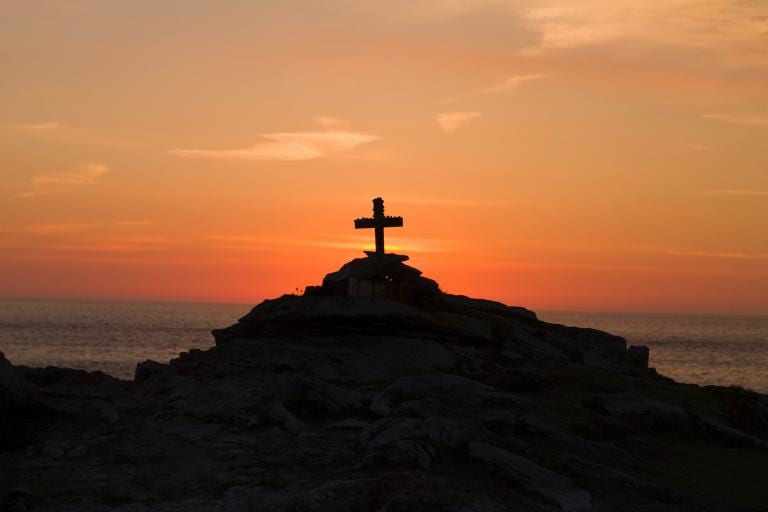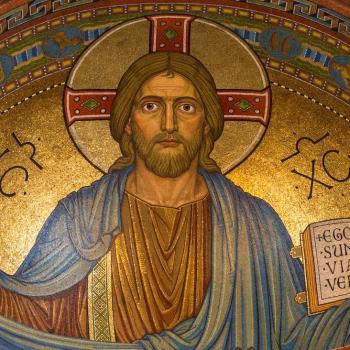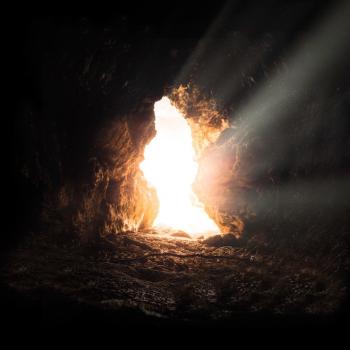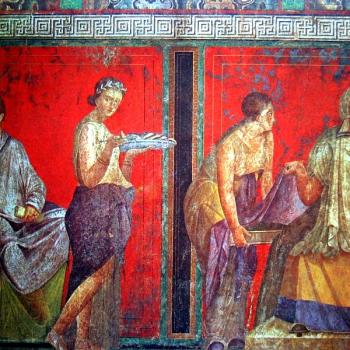
It’s Easter week and if you attend Christian church services in the coming days, you’ll hear the story of the resurrection of Jesus. In a nutshell, it goes like this: Jesus was crucified, died and was buried—and on the third day he rose from the dead.
It’s the third day that’s worth we’re looking at, because as it turns out there are many different tales as to what happened on the day of Jesus’s resurrection. There are two variations that appear in the Bible, one that we often hear about, the other not so much. Then, there are several stories from the Gnostic Gospels that paint a different picture altogether.
“Jesus, is that you?” A look at the Resurrection according to the Bible.
If you’ve ever read the Bible, you know that the same event can be told in different ways, depending on which of the four gospels it appears. For instance, the birth of Jesus was described one way in Matthew, and a different way in Luke. This is also true when it comes to the resurrection of Jesus.
The Gospel of John contains what is probably the best known narrative of Jesus’s resurrection. You may know the story about Thomas who doubted the return of Jesus. He told his fellow disciples “unless I see the nail marks in his hands and put my finger where the nails were, and put my hand into his side, I will not believe.” Jesus then appears to his disciples as a flesh-and-blood human being, inviting Thomas to “put your hand into the wound in my side. Don’t be faithless any longer. Believe!”
But in both the Gospels of Luke (24:13-32) and in Mark (16:11) the story gets a little stranger. Each reports that Jesus appeared “in another form,” not the Jesus they knew, but seemingly in the body of another man. Per Luke’s version, the disciples were deeply troubled after the death of Jesus and meet a man while walking on the road to Emmaus. I’ll let the religious scholar Elaine Pagels pick up the story from here:
The disciples talked with the stranger, apparently for several hours. They invited the man to dinner; when he sat down with them to bless the bread, suddenly they recognized him as Jesus. At that moment, he vanished out of their sight.
As odd as this story may sound, it’s not the only time in the New Testament that a disciple does not immediately recognize the resurrected Jesus. It also happens in John 20:15. Here it’s reported that Mary Magdalene, who stayed with Jesus at the Crucifixion after all his male followers had abandoned him, was weeping at his grave. A man passes by her who she does not recognize. Pagels explains:
We are told that Mary thought Jesus was the “gardener” and assumed that he could have moved the body of Jesus. It’s not until he called her name that Mary realized that this man was the resurrected Lord.
What’s going on here? How could those closest to Jesus not recognize him? Could it have been a case of mistaken identity? Or was Jesus shapeshifting into the bodies of other human beings? Perhaps these were just colorful tales and the truth can be found in texts not contained within the Bible.
Are you familiar with the Gnostic Gospels?
Here’s a quick primer: The Gnostic Gospels are religious texts that come from the earliest days of Christianity, when there were many different books circulating about the life and teachings of Jesus. As an archival story from The New York Times reported in 1979:
These so‐called gnostic writings describe many of the people and events found in the New Testament but from a strikingly different perspective. They suggest that the early church, far from the unified body that we have assumed it to be, was deeply split from the beginning; that many followers of Jesus were not in agreement on the facts of his life, the meaning of his teachings, or the form that the church should take.
In these early days, a single religious group came to dominate Christianity, calling themselves orthodox, or “straight‐thinking” Christians. (Later to become the Eastern Orthodox and Roman Catholic branches of the church.) They deemed the gnostic writings “heretical” and saw to it that virtually every copy of these texts was destroyed in the second to fourth centuries of the Christian Era. They did a pretty good job of it, though over 50 of these texts resurfaced in 1945 at Nag Hammadi in Egypt.
The Gnostics tell a very different story of the Resurrection.
As Elaine Pagels points out in her landmark book The Gnostic Gospels, the big news contained within the Bible’s resurrection stories is that Jesus literally came back to life. And “what makes these accounts so extraordinary is not the claim that his friends had “seen” Jesus after his death—but that they saw an actual human being.” Not just the spirit or ghost of Jesus but an actual living, breathing person.
Gnostic Christians interpreted the resurrection in a much different way. They believed that Jesus was not physically brought back to life but that those who encountered Jesus did so on a spiritual level. Pagels tells us the Gnostics believed these encounters with Jesus occurred “in dreams, in ecstatic trance, in visions, or in moments of spiritual illumination.”
To this point, in several gnostic texts, Jesus appears not in a physical form but in a spiritual one. The people involved are the same disciples we know from the Bible, but their experiences are much different. For instance, in the gnosticGospel of Mary, Mary Magdalene claims that she saw Jesus not walking by her at the gravesite (as reported in Luke), but in a vision. She later claims to “experience his continuing presence” in the days that follow.
Similarly, in the gnostic Apocalypse of Peter, the apostle Peter sees Jesus while in a trance. He sees Jesus surrounded by a bright field of light, as well as “invisible angels.” Jesus tells Peter “I am the intellectual spirit, filled with radiant light.”
Then there’s the following passage from The Letter of Peter to Phillip. In this gnostic text, it is said that after the death of Jesus, the disciples were praying on the Mountain of Olives when something odd happened:
A great light appeared, so that the mountain shone from the sight of him who had appeared. And a voice called out to them saying “Listen…I am Jesus Christ, who is with you forever.”
A similar story is told in another gnostic text, The Wisdom of Jesus Christ. Here again the disciples are gathered on a mountain after Jesus’ death. In this tale, “Jesus appeared to them not in his original form but in the invisible spirit. His appearance was that of a great angel of light.” He speaks to the disciples and offers to teach them “the secrets of the universe.”
Importantly, the Gnostic writers did not dismiss the visions as mere fantasies or hallucinations. They saw the resurrection as “not a unique event in the past: instead, it symbolized how Christ’s presence could be experienced in the present.” Pagles goes on to explain that the Gnostics believed that:
The disciples themselves often misunderstood what Jesus said: those who announced that their dead master had come back physically mistook a spiritual truth for an actual event.
Did Jesus really return from the dead as a flesh-and-blood person? Or was it his spirit that returned to grace his disciples? Perhaps it really doesn’t matter. What seems more important, both 2,000 years ago and today, is that we have the ability to realize the Christ consciousness that lives on within all of us. It’s not so much about the man; it’s about his message.













